Satyrinae "Satyridae" of authors
Niklas Wahlberg and Andrew V. Z. Brower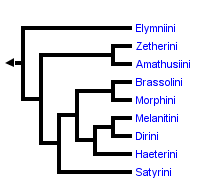


This tree diagram shows the relationships between several groups of organisms.
The root of the current tree connects the organisms featured in this tree to their containing group and the rest of the Tree of Life. The basal branching point in the tree represents the ancestor of the other groups in the tree. This ancestor diversified over time into several descendent subgroups, which are represented as internal nodes and terminal taxa to the right.

You can click on the root to travel down the Tree of Life all the way to the root of all Life, and you can click on the names of descendent subgroups to travel up the Tree of Life all the way to individual species.
For more information on ToL tree formatting, please see Interpreting the Tree or Classification. To learn more about phylogenetic trees, please visit our Phylogenetic Biology pages.
close boxIntroduction
Satyrinae now includes Morphini, Brassolini and Amathusiini, taxa that have formerly been considered subfamilies or even families in their own right. The family is widespread, with representatives ranging from the Arctic to Tierra del Fuego and occurring on every continent except Antarctica. The preponderance of diversity is tropical. All satyrines have larvae with bifid "tails," most feeding on monocots. The adults frequently have large eyespots on the ventral and sometimes dorsal surfaces of the wings.
Discussion of Phylogenetic Relationships
The phylogenetic hypothesis shown here is based on the DNA sequence-based cladogram of Peña et al. (2006), and on unpublished results (Wahlberg and Brower). The relationships within and among the various tribes and subtribes are still in a high degree of flux, although the recent results show that many taxa identified in the last comprehensive revision of the group (Miller 1968) are not natural groups.
References
Miller LD. 1968. The higher classification, phylogeny and zoogeography of the Satyridae (Lepidoptera). Mem. Amer. Entomol. Soc. 24: 1-174.
Pena C, Wahlberg N, Weingartner E, Kodandaramaiah U, Nylin S, Freitas AVL, and Brower AVZ. 2006. Higher level phylogeny of Satyrinae butterflies (Lepidoptera: Nymphalidae) based on DNA sequence data. Mol. Phylogenet. Evol. 40: 29-49.
Title Illustrations

| Scientific Name | Lasiommata petropolitana |
|---|---|
| Location | France, Ariege |
| Specimen Condition | Dead Specimen |
| Identified By | Niklas Wahlberg |
| Image Use |
 This media file is licensed under the Creative Commons Attribution-NonCommercial License - Version 3.0. This media file is licensed under the Creative Commons Attribution-NonCommercial License - Version 3.0.
|
| Copyright |
© Niklas Wahlberg

|
| Scientific Name | Morpho amathonte |
|---|---|
| Location | Costa Rica, Area de Conservacion Guanacaste |
| Specimen Condition | Dead Specimen |
| Identified By | Daniel Janzen |
| Image Use |
 This media file is licensed under the Creative Commons Attribution-NonCommercial License - Version 3.0. This media file is licensed under the Creative Commons Attribution-NonCommercial License - Version 3.0.
|
| Copyright |
© Niklas Wahlberg

|
| Scientific Name | Hyantis hodeva |
|---|---|
| Specimen Condition | Dead Specimen |
| Identified By | Niklas Wahlberg |
| Image Use |
 This media file is licensed under the Creative Commons Attribution-NonCommercial License - Version 3.0. This media file is licensed under the Creative Commons Attribution-NonCommercial License - Version 3.0.
|
| Copyright |
© Niklas Wahlberg

|
About This Page
Niklas Wahlberg

University of Turku, Finland

Middle Tennessee State University, Murfreesboro, Tennessee, USA
Correspondence regarding this page should be directed to Niklas Wahlberg at and Andrew V. Z. Brower at
Page copyright © 2009 Niklas Wahlberg and
 Page: Tree of Life
Satyrinae "Satyridae" of authors.
Authored by
Niklas Wahlberg and Andrew V. Z. Brower.
The TEXT of this page is licensed under the
Creative Commons Attribution License - Version 3.0. Note that images and other media
featured on this page are each governed by their own license, and they may or may not be available
for reuse. Click on an image or a media link to access the media data window, which provides the
relevant licensing information. For the general terms and conditions of ToL material reuse and
redistribution, please see the Tree of Life Copyright
Policies.
Page: Tree of Life
Satyrinae "Satyridae" of authors.
Authored by
Niklas Wahlberg and Andrew V. Z. Brower.
The TEXT of this page is licensed under the
Creative Commons Attribution License - Version 3.0. Note that images and other media
featured on this page are each governed by their own license, and they may or may not be available
for reuse. Click on an image or a media link to access the media data window, which provides the
relevant licensing information. For the general terms and conditions of ToL material reuse and
redistribution, please see the Tree of Life Copyright
Policies.
- First online 25 September 2006
- Content changed 09 November 2006
Citing this page:
Wahlberg, Niklas and Andrew V. Z. Brower. 2006. Satyrinae "Satyridae" of authors. Version 09 November 2006 (under construction). http://tolweb.org/Satyrinae/12189/2006.11.09 in The Tree of Life Web Project, http://tolweb.org/




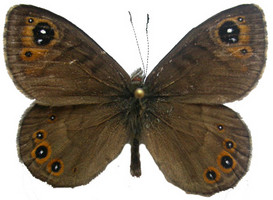
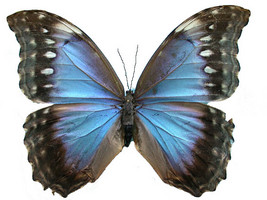
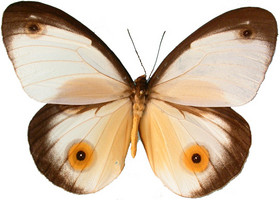

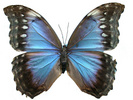


 Go to quick links
Go to quick search
Go to navigation for this section of the ToL site
Go to detailed links for the ToL site
Go to quick links
Go to quick search
Go to navigation for this section of the ToL site
Go to detailed links for the ToL site